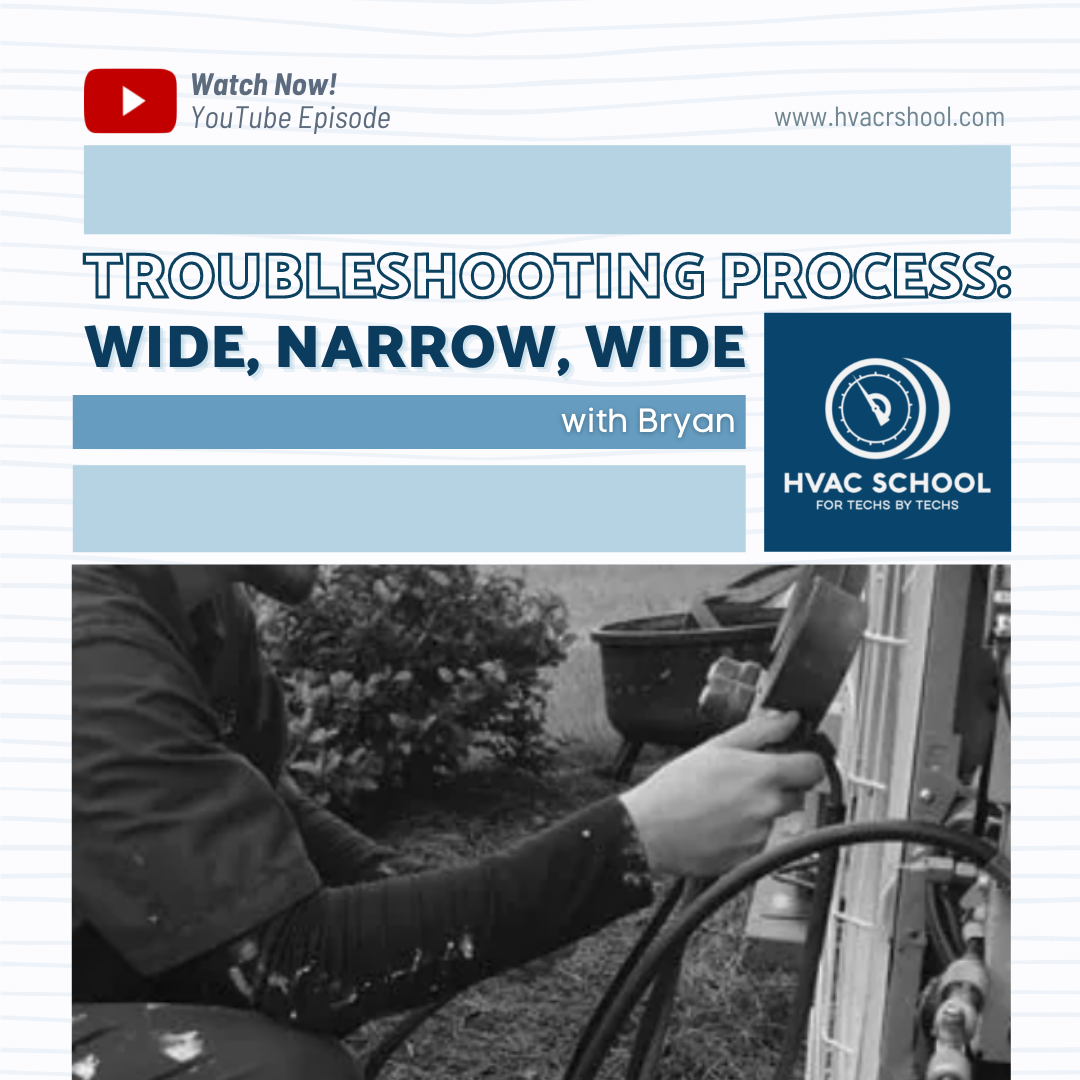Troubleshooting Process – Wide, Narrow, Wide
May 17, 2022


When a good diagnostician walks into a home, they look at the problem very broadly or start with a “wide” approach to diagnosis. They don’t limit their scope to a certain component or head to the call with a fixed pre-diagnosis. Good technicians listen to the customer, look for new thermostats, check the filter, and note every detail they can that could be relevant to the system performance.
Once you’ve noted all of the noticeable broad items of interest with the whole system, you can shift your focus to finding the main thing that is keeping the HVAC system from working. Check your static pressure and other diagnostic readings on the airflow side. Weigh the charge as well to see if you might be dealing with a leaky or overcharged system. Even if you don’t find any airflow or charge problems, you can still check those things to rule out possible issues.
Pay attention to line set lengths, missing accessories (e.g., crankcase heaters), and start gear (capacitors) as well. Check everything you can before you run test the compressor. Being thorough is the key, and most good companies should allow you to be as thorough as you need to get a proper diagnosis. (However, that requires a balance of thoughtfulness and efficiency, and you need to charge an appropriate amount of money for good work.)
Comments
I love investigating and having the thrill of thinking outside the box.
I love investigating and having the thrill of thinking outside the box.
To leave a comment, you need to log in.
Log In